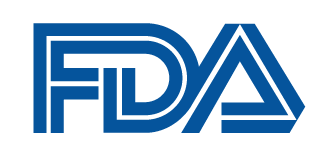New VFD Regulations Will Affect Most Livestock Producers
Posted: February 11, 2016 | Written By: Dave Lahr, M.S., PAS. Nutritionist, Form-A-Feed
We are now about 10 months away from the implementation of sweeping changes in FDA regulations affecting the use of antibiotics in animal feeds. These changes will affect the use of antibiotics that are deemed “medically important”, generally meaning that they are also used in human medicine.
These regulatory changes will take full effect by January 1, 2017. Form-A-Feed and the other Nelson Family Companies will fully comply with all regulations, and will assist our customers in understanding and complying with them. We advise against any attempts to circumvent these rules, as the safety of our food supply and the reputation of the livestock industry are at stake.
There are 283 medications and combinations affected by this regulatory change, but the most common cattle and swine medications affected include:
- Tetracyclines (CTC/Aureomycin, OTC/Terramycin)
- Penicillin
- Tylosin (Tylan)
- Lincomycin
- Virginiamycin (Stafac)
- Neomycin
- Sulfamethazine and Sulfathiazole
- Apramycin
- Any combination that includes one or more of these drugs
Growth promotion and feed efficiency claims for these medications will no longer be allowed. And therapeutic uses will require a Veterinary Feed Directive (VFD) from a licensed veterinarian with whom you have established a valid veterinary-client-patient relationship.
Unaffected medications include:
- Ionophores (Rumensin®, Bovatec®, Cattlyst®)
- Wormers
- Coccidiostats (Amprolium®, Deccox®)
- Melengestrol Acetate (MGA)
- Tiamulin (Denagard®)
- Ractopamine (Paylean®, Optaflexx®)
- Bambermycins (Gainpro®, Flavomycin®)
Your feed supplier cannot supply a livestock producer with feed containing any of these affected antibiotics without a copy of the VFD, properly filled out by a licensed veterinarian. The VFD must include:
- Veterinarian’s name, address and phone number
- Client name, address and phone number
- Specific location of animals specified in the VFD
- VFD date and expiration date (not more than 6 months)
- Name of VFD drug(s), level of drug, indication and duration of use
- Species and production class and number of animals
- Withdrawal time, special instructions and cautions required for the drug
- Number of reorders authorized (if permitted)
- Indication of combinations allowed
- Veterinarian’s electronic or written signature
- The medicated feed label will include the statement: “Use of feed containing this veterinary feed directive (VFD) drug in a manner other than as directed on the labeling (extra label use) is not permitted.”
What steps should producers take?
- Build relationship with a veterinarian licensed in your state, that knows you and your animal production practices, and foster the relationship between your nutritionist and veterinarian.
- Contact your veterinarian to diagnose and treat your animals, and follow his/her recommendations.
- Provide a copy of the VFD order to your feed supplier if the veterinarian sends the distributor’s copy to you.
- Use the VFD medicated feed according to directions on the VFD order.
- Maintain a copy of all VFD and feed records for at least 2 years, and make available to the FDA for inspection or copying, if requested.
How can we reduce our need for these medications?
- Work toward best animal husbandry practices to minimize health challenges.
- Use alternative botanical products which have been shown to benefit health and performance (ask your Form-A-Feed representative about Aromax® products, Villipro®, Direct-Fed Microbials, and other products).
- Use alternative medications where possible.
For more information, visit the FDA Website.
Medications listed include brand names owned by their respective sponsor. Intended for informational purposes, not to endorse or exclude other brands.
